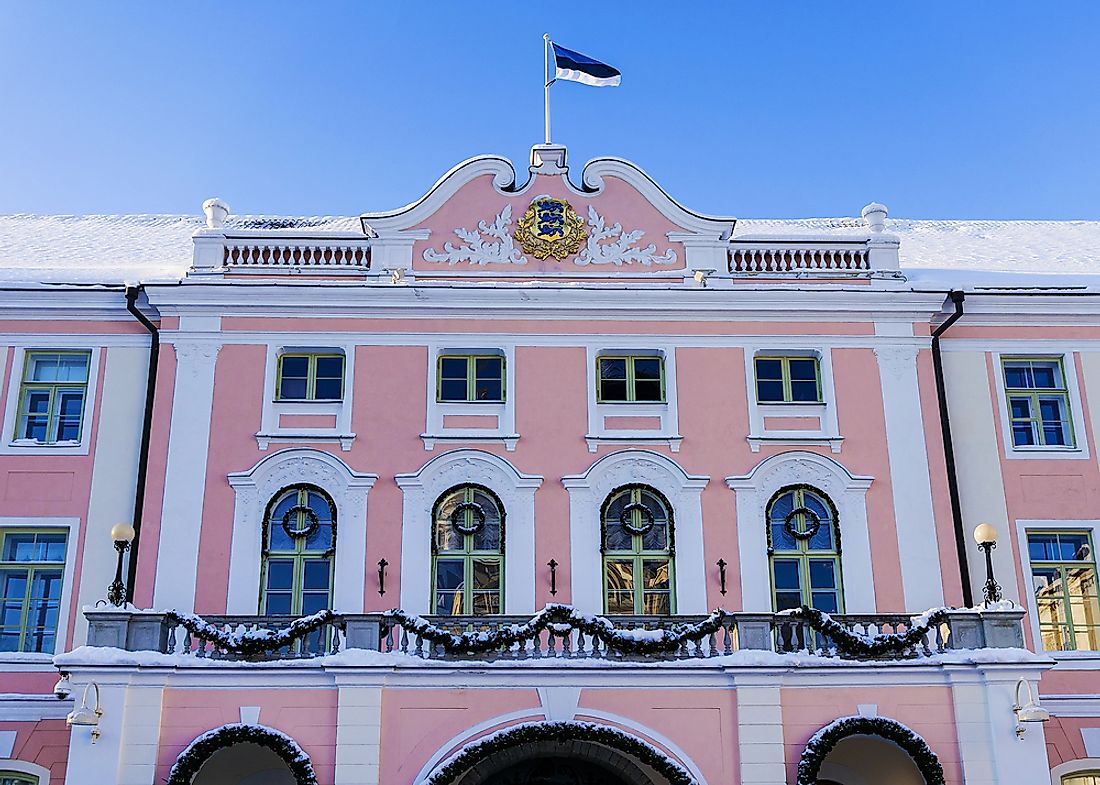What Type Of Government Does Estonia Have?

The Republic of Estonia is a small European country which was formely part of the Soviet Union. It gained independence on August 20, 1991 after the collapse of the Eastern Bloc. Estonia has a parliamentary representative system of government and is divided into three arms: the legislature, the executive, and the judiciary. According to the Constitution of Estonia, the President is the head of state but has no executive powers. The Prime Minister is appointed by the President and is the head of government.
The President Of Estonia
The President of Estonia is elected by a special electoral body to serve a five-year term. The President has no executive powers but has several important roles and duties defined in the constitution, which include promulgating laws and signing the instrument of ratification. As head of state, the President also acts as the senior-most representative of the country in all international affairs and signs all international treaties. Most senior officials in government are appointed or nominated by the President including the Prime Minister, the Chairman of the Supreme Court, the Auditor General and the President of the Bank of Estonia. The President can serve several terms but is limited to only two consecutive terms.
The Prime Minister Of Estonia
The Prime Minister is the head of government and is deemed as the supervisor of all work of government. The Prime Minister is nominated by the President and is confirmed by Parliament. In most cases, before the appointment, the Prime Minister is the leader of the largest party, and the authority and influence in government is defined by his position within the party.
Parliament Of Estonia
The legislative arm of government in Estonia is known as Riigikogu and is a unicameral parliament with only one chamber. The Riigikogu is comprised of 101 members (with the government and opposition sharing the membership) who are elected by proportional representation to serve a four-year term. The parliament of Estonia is one of the most important arms of government. The Constitution provides the Riigikogu several roles which make it very powerful including appointing the President, confirming the appointed Prime Minister as well as appointing the Chief Justice of the Supreme Court. The Riigikogu also has powers to ratify international treaties with military obligations as well as amending the constitution. The Riigikogu is headed by the Speaker.
The Cabinet Of Estonia
The Executive is the arm of government involved in carrying out all domestic and foreign policies of the country. Also known as the cabinet, the Executive is led by the Prime Minister and is comprised of several ministers who head respective ministries. The cabinet is accorded executive powers by the constitution and is a representation of the country’s political leadership. The roles of the cabinet include co-ordination of the activities of governmental agencies as well as overseeing the implementation of the law. The Executive is also responsible for the preparation of the national budget and its presentation to the Riigikogu.
The Judiciary Of Estonia
The Judiciary is an independent arm of the government and is mandated to administer justice. The Judiciary is headed by the Chief Justice who is responsible for the nomination of Supreme Court judges who are then confirmed by the Riigikogu. The judicial system is divided into the city, rural, and administrative courts, the circuit court of appeal and the Supreme Court.







